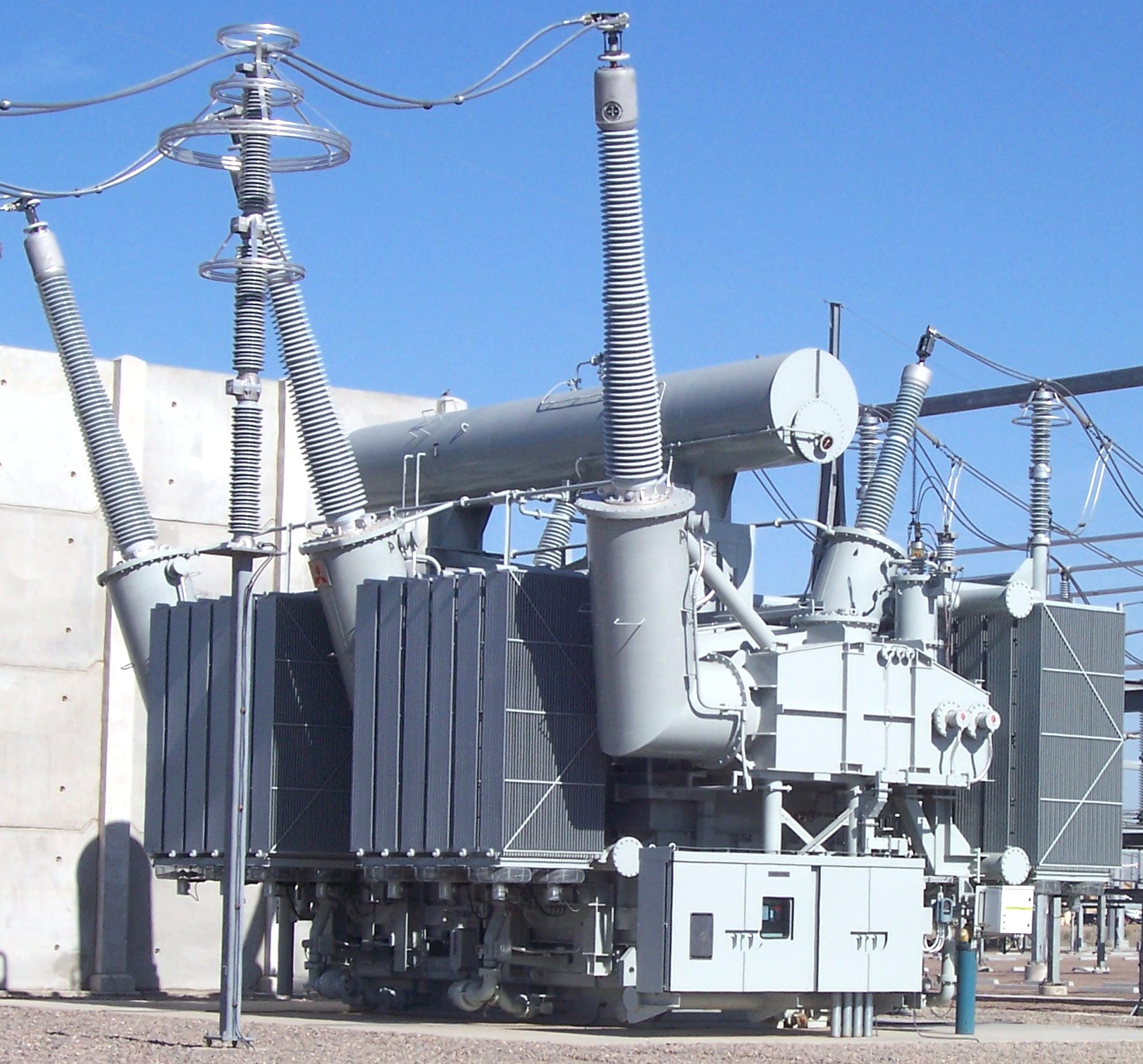TRANSMISSION AND DISTRIBUTION
Transformer
A transformer is a static electrical device that transfers electrical energy between two or more circuits through electromagnetic induction. A varying current in one coil of the transformer produces a varying magnetic field, which in turn induces a varying electromotive force (emf) or "voltage" in a second coil. Power can be transferred between the two coils, without a metallic connection between the two circuits. Faraday's law of induction discovered in 1831 described this effect. Transformers are used to inc rease or decrease the alternating voltages in electric power applications.

Since the high voltages carried in the wires are significantly greater than what is needed in-home, transformers are also used extensively in electronic products to decrease (or step-down) the supply voltage to a level suitable for the low voltage circuits they contain. The transformer also electrically isolates the end user from contact with the supply voltage. Transformers are used to increase (or step-up) voltage before transmitting electrical energy over long distances through wires. Wires have a resistance which loses energy through Joule heating at a rate corresponding to the square of the current. By transforming power into higher voltage transformers enable economical transmission of power and distribution. Consequently, transformers have shaped the electricity supply industry, permitting generation to be located remotely from points of demand. All but a tiny fraction of the world's electrical power has passed through a series of transformers by the time it reaches the consumer
